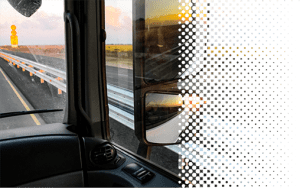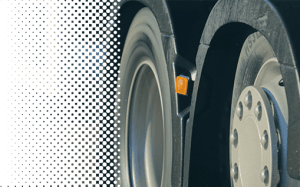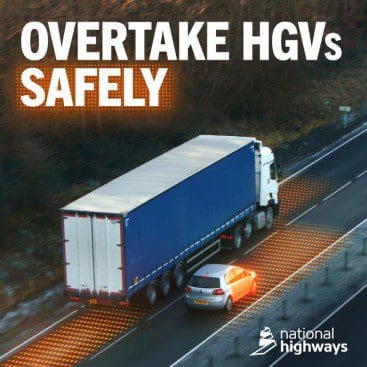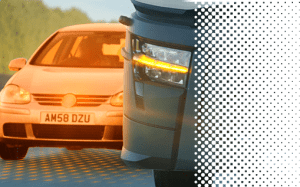HGVs have limited visibility. Don’t linger around them.
Know the zones.
Large vehicles, such as heavy goods vehicles (HGVs) have zones of limited visibility and are considerably longer, heavier, and more powerful than standard vehicles. They also need more stopping distance.
Other drivers often underestimate the size and position of these zones of limited visibility. Please be aware of the zones so you can stay safe.
- The advice for drivers is know the zones – HGVs have four zones around them where their visibility is limited – at the front, back and both sides. Pass quickly and safely and where possible, don’t linger next to a HGV.
If you find yourself in a
limited visibility zone
Avoid lingering in these zones and move through them safely
Front zone
HGV drivers sit high up. If you are too close, they won’t be able to see you. When driving in front of an HGV ensure there is enough space between you and the HGV to allow them to see you and have enough room to brake safely.
Left zone
The Highway Code advises not to undertake other vehicles. Do not overtake on the left or move to a lane on your left to overtake. However, if you do find yourself in the left lane with an HGV on your right, you should manoeuvre yourself out of the limited visibility zone safely, as the driver might not have seen you.
Right zone
Overtake with care. Make sure that you have enough room ahead to complete your overtaking manoeuvre. It takes longer to pass a long vehicle so do not linger and ensure there is enough room to pull back in to where the driver can see you.
Rear zone
If you are driving too close when following an HGV, you will not be visible to the driver or be able to see the road ahead. As a rule, if you are not able to see the HGV’s external mirrors or cameras, the driver cannot see you. Make yourself more visible by pulling back to where you can be seen. This could be up to three car lengths.
See it from the HGV driver
perspective
Car and van drivers don’t always realise the challenges faced by an HGV driver. Seeing things from their perspective may help you to understand why you need to drive safely around them.
 It’s a
It’s a
complicated job
HGVs are complex machines and demanding to drive. Since 2007 double mirrors have been mandatory on all new lorries to reduce blind spots. However, the environment both inside and outside of the HGV cab can limit the driver’s visibility and responsiveness.
 Braking
Braking
distance
HGVs are far longer and heavier than other vehicles on our roads. This means that their braking distances are a lot longer than those of cars and light commercial vehicles. Give an HGV plenty of space when you overtake.
 Safety is good for
Safety is good for
everyone
HGV drivers are specially trained to drive in different road environments and anticipate risks. However, it’s every road user’s responsibility to look out for each other on the road. Please remember that your decisions directly impact other road users.
Three points to remember
-
Stay visible
HGVs have areas of limited visibility along both sides. Don’t linger in these zones. Overtaking large vehicles is more difficult, so make sure that you have enough room ahead to complete your overtaking manoeuvre.
-
Overtake with care
Ensure that you have enough space ahead to complete your overtake before committing to the manoeuvre. Remember it takes more time to pass a large vehicle. Don’t pull back in too quickly. Make sure there is enough room between you and the HGV’s front blind spot
-
Don’t tailgate
HGVs have longer blind spots at the back. Dropping back will make it easier for you to see ahead and it should allow the driver of the large vehicle to see you in their mirrors. Getting too close behind large vehicles will mean you can’t see the road ahead. It will also reduce your stopping distance.
When in doubt,
slow down
When it comes to keeping safe, slowing down can make all the difference. Always slow down in response to changes in road conditions, including severe weather, heavy traffic, or poor visibility of the road ahead. This gives you, and the car and van drivers around your HGV, extra time to take corrective action or respond to sudden changes on the road ahead.



